#aqua culture
Text


“Mighty oaks from little acorns grow!”
88 notes
·
View notes
Text







#🪩#girlblogging#girlblogger#girlhood#manic pixie dream girl#just girly posts#hell is a teenage girl#indie sleaze#it girl#2000s internet#late 2000s#2000s web#webcore#old web#frutiger aero#frutiger aqua#2000s nostalgia#internet culture#internet core#im just a girl#girl rage#messy moodboard#messy girl#messy aesthetic#cinnamon girl#this is a girlblog#this is what makes us girls#2014 tumblr#old tumblr#moodboard
53 notes
·
View notes
Text
youtube
this is old but i forgot to mention it came out! aqua is one of the more popular hololive members amongst jirai girls in japan, probably because of the total moe overload, but she recently put out a cover for this song (popular w ryousan and jirai girls since its about falling in love with a host and knowing his feelings for you are fake but wanting to be shown more affection anyway) and i thought my followers would enjoy since most of yall are either ryousan girls, jirai girls, or interested in learning about those subcultures!
#also bc its a certified banger of a cover and of a song#Youtube#my post#vent#pien kei#地雷女#jiraiblr#ryousangata otaku#ryousan girl#ryousangata wotaku#jiraiblogging#host club#menhera#メンヘラ#minato aqua#hololive#kabukicho#for my non holojp fans the person depicted as the host is her fellow hololive member okayu#shes also adorable but its like shes got a 'cool' image#and manages to be cute too#pien culture#music
81 notes
·
View notes
Note
Happy new years! If you're still taking requests maybe something with olivier?

gotta stay safe to avoid snow-blindness
107 notes
·
View notes
Text

She's so gorgeous I kind of want to cry. Almost 10 hours of sitting still with my arm at all sorts of awkward angles, totally worth it.
My tattoo artist was Kacey Meg, who is based at Little Harajuku Tattoo Studio in Adelaide, Australia 🥰
40 notes
·
View notes
Note
Happy New Year stump! o/
Got any fun plans for the new year?
i genuinely thought about this for the first few days of this new year and couldn't come up with anything that fun? 😭
gonna live, gonna enjoy small moments, big moments if they happen, something like that👍🏼
#fun plan number one: witness the beginning of construction of a cool bridge#fun plan number two: witness the city park update (with a rumoured aqua park???)#fun plan number three: see the culture center get finished#i wanna see what happens basically thats why i exist and why i have at least... 2 sensors all around me#what about you zircon! anything cool :o#answeringstump
8 notes
·
View notes
Text
Pop Culture Magic | Fight the Darkness Charm
"My heart is strong. I'll prove it!"

This spell is inspired by Kingdom Hearts, a well loved Square Enix video game series. More specifically inspired by a character from the Series, Aqua - one who constantly fought the darkness, won many times, and managed to claw her way back out when she was lost... with a little help from her friends.
This spell is to help fight the Darkness in your life. Be that stress, anxiety, or just plain old sadness. Everyone can use a little uplifting.

What you'll need:
• Mesquite incense
I use this for protection, healing, and cleansing, though you may substitute for whichever incense you prefer. Or none at all if incense bothers you.
• Aqua blue candle
Esoteric meaning of aqua includes happiness, harmony, healing and peace
• A small Star shaped jar
I am a sucker for spell jars. The star in this case represents the Wayfinder charm Aqua made for Ventus and Terra. Also acceptable is a regular bottle with a star shaped charm to wrap around or attach to the jar. Ideally the jar will be small enough to make a necklace out of to wear this as a ward.
• Obsidian chips
Used for protection, and elimination of negative energy from the self and environment
• Dried Lavender buds
Soothing for anxiety, plus smells nice while adding to your jar.
• Dried Green tea leaves
These improve your focus and help reduce stress in a spell.
• Pink Himalayan salt
Calming, self love
• Fluorite chips
These help create order from chaos, relieve stress, aid in focus, and cleanse

As this spell bottle is for cleansing yourself of stress, anxiety, and sadness the best place to start is grounding and centering yourself. There are many ways to do so, and I always recommend choosing your favorite method. I personally like to meditate and visualize for about 10 to 15 minutes before a spell if time allows for it.
Once you've prepared yourself and your work space, light your incense and repeat these words three times:
I can feel the Light
May my Heart be my Guiding Key
The Darkness Doesn't Interest me
After repeating the rhyme, use the smoke from the incense to cleanse the bottle you're using. Pass the opening over the smoke a few times to catch some in the bottle. Once you've felt you have done this enough times (I usually recommend 3 to 7) turn the jar right side up and let the smoke clear from the inside.
Light your aqua blue candle, and then you can start layering your spell ingredients. The order only matters to the spell caster, but this is the order I would use:
First, a layer of black obsidian chips for eliminating negative energy from yourself and the environment around you.
Then a layer of pink Himalayan salt to cleanse yourself and promote self love.
Followed by a layer of green tea and lavender buds (you can mix the two together) for focus, reduced stress, and soothing anxiety.
Last but not least, a layer of fluorite chips to create order from the chaos causing your darkness.
Place the cork in the bottles opening, and use the wax from the aqua blue candle to seal it. If you used a star shaped bottle, this will be one of your last steps. But if you used a bottle that was a regular shape, then you would attach the star shaped charm and secure it with the wax as well. As you're doing this, you can repeat the rhyme from above three more times.
If the bottle is small enough to wear, you should attach the necklace it will be on after the wax has dried enough to do so, but before you snuff out the candle. Let the candle burn as the wax dries and take that time to visualize and focus on the results you desire from this charm.

#charm#spell bottle#witchcraft#witchcore#witch community#witchblr#witches#magic#magick#pagan#paganism#kitchposting#reginasolem#pop culture#pop culture magic#pop culture magick#pop culture witchcraft#kingdom hearts#kingdom hearts 3#aqua#terra#ventus#wayfinder trio#kh#kh3
54 notes
·
View notes
Note
The doctor thinking they’re clever for noticing Clark Kent and Superman are the same person is really really cute🥺🥺 (in return of Dr Mysterio)
clark kent is WHAT
#twelve: *just barely understands one of the most universally known pieces of pop culture ever* please clap.#aqua n neko#asks#kendrix morgan died for our sins#doctor who for ts
7 notes
·
View notes
Text
Triforce Heroes Backstory
One day, three near-identical, pointy-eared swordsmen with side-parted hair happened to stumble upon the kingdom of Hytopia at the same time and place. As the prophecy foretold, they joined in the quest to save Princess Styla from her ugly fate. They came from very different lands and backgrounds yet bear the exact same name, Link, after the courageous hero of legends. Because of this, the trio used simple nicknames, and generous amounts of hair dye, to differentiate themselves.
Ember
Ember is a soft-spoken arborist and aspiring dancer hailing from the heart of Holodrum. He was raised by a lovely couple, Bipin and Blossom, in a quaint town called Horon Village. Ember was a bit of a shy kid and a slacker before he discovered a love for music and dance. Then, he was mentored by the Oracle Din. She helped bring him out of his shell and even encouraged him to take up swordsmanship to protect himself and his family. Din would often refer to this child as a "shy little ember" who had the potential to become a great and passionate flame, from which his nickname was derived.
On his 16th birthday, Ember went traveling outside his homeland to explore the world and its boundaries with nothing but a couple of rupees, an old sword, and the clothes on his back. Optimistic of the exciting things he may see, he traveled to many distant lands before finding his way to Hytopia where he was scouted for the Witch-Hunting Brigade. Working with the other Triforce Heroes and saving princess Styla helped Ember build character and find his own inner strength and power.
Aqua
Aqua is an energetic warrior and emotional singer hailing from the land of Labrynna. He was taken in by a sweet couple, Ralph and Nayru (the oracle), in a quaint cottage just outside Lynna City. He was a bit of an hyperactive and reckless kid who loved swimming in the rivers and sea and was fascinated with looking for mermaids and sirens. As Aqua grew up, he developed a love of heroic stories and epic ballads, taking up singing like his mother and swordsmanship from his father. He was especially inspired by the legends of a Hyrulian hero that his parents told him about, the one that saved the land thrice over and personally passed down his sword technique to Ralph.
On his 16th birthday, Aqua set out to find his own daring adventure out in the world. By doing so, this thrillseeker hoped to get inspiration for his songwriting, hone his swordmanship skills, and finally live out the hero life he only ever sang about before. Optimistic of the exciting new things he may experience, Aqua traveled to many distant lands before finding his way to Hytopia where he was scouted for the Witch-Hunting Brigade under a random nickname. Working with the other Triforce Heroes and going on such an epic journey helped Aqua learn how to be wiser and think things through instead of hastily jumping into dangerous yet exhilarating situations.
Clover
Clover was an artsy but apathetic hero of his own right when he left the kingdom of Hyrule. After his adventure between two worlds, he went on a journey running away chasing an unattainable dream and found himself traveling north towards Hytopia. There, he ended up joining the Witch-Hunting Brigade. Going by a childhood nickname, Clover worked with the other Triforce Heroes and found joy and brotherhood, something that he previously believed he wouldn’t get to experience in the life of a hero, before working up the courage to return home.
Here's my shitty little doodles of what Ember's (middle) and Aqua's (right) outfits could look like plus Clover's (left) swordmaster suit. Ember has the arborist hat like his dad, white scarf and decals from the power rangers suit, and fire gloves from the fire blazer outfit. Aqua has the crown from the water torrent robe and his dad's cape from OoA. I want their main outfits to have subtle changes and accessories to the same basic sword suit tunic.

These three found a love of fashion and heroism with their fellow brothers-in-arms as they came together to go on adventures from forests, lakes, and deserts, sporting new outfits and brightly dyed hair. And once their journey was complete, Ember and Aqua decided to continue traveling the world together to this day while Clover went back to Hyrule, later helping Zelda and Styla forge an alliance.
#did some mini backstories for ember and aqua#im ashamed to admit the amount of research i did on how to help raise the kid in the oracles games (where i drew a lot of inspo from)#i love the idea they come from the oracles of their lands and they all dye their hair like their respective oracles#i would love to play triforce heroes multiplayer but alas#at least four swords is on switch now#i have many ideas about how hytopian culture revolves around fashion that i was going to include but i'll make a whole new post for instead#i also decided to make the ravio stuff a seperate post too#albw was my most favorite loz game growing up so there was a LOT#tc ember#tc aqua#tc clover#tc au#twin chains#loz#triforce heroes#tri force heroes
3 notes
·
View notes
Text
Anonymous asked: I enjoy your tumblr tremendously. You manifest an appreciation, perhaps passion, for Scotch Whiskey. Firstly, do you consider fine Japanese or Australian whiskey equally good? Secondly, do you also enjoy Armagnac and Cognac? Personally, I find the former often overlooked and, generally, better value. What do you think? Thanks!
I’m very much a wine drinker these days and being a co-owner of a French vineyard has made me more immersive in that world of appreciating fine wines, its traditions passed down from generation to generation on wine making, social customs that are the fabric of particular way of living and enjoying life. By the very act of drinking the wine you are being a part of the terroir (a hard word to define but generally meaning ‘of the soil’) of where the wine was made.

There are a lot of similar reasons to drink whisky of which I used to drink a lot, especially when I was an army officer and drinking games in the officers mess was the done thing. But these days I drink in extreme moderation and often with a well deserved cigar. Some people like the way it makes them feel fuzzy and warm, when laughing comes a little easier. Maybe it takes the edge off a long day or helps hype the anticipation for what might be a long night. For me, the reasons why I love whisky are much more than that.
Like wine, whisky tells us a story. In my case a Scottish story as one side of my family have strong roots in that part of the world, and are still thriving there. It tells a story of a certain time and a certain place, of a distillery and those who work in it. I love the idea that an entire team of people worked every day to grow barley, distill whisky, maintain a distillery, patiently watch over barrels, and the million other minute tasks that go into creating a single bottle of whisky that is then transported locally and all over the world for me to enjoy. And when I’m holding a 20 year old Aberfeldy single malt in a Glencairn glass on the other side of the world, I can take one sip and feel myself transported all the way back to the central Highlands.

And it tells a story on an individual level, too. What inspired me to buy the bottle and where I got it. Maybe it starts with how I learned about it or where I first tried it and weaves until here and now, to who I’m drinking it with and when. So when I sip on any Dalmore whisky I sometimes think of meeting Dalmore’s master distiller, Richard Paterson, who wowed me with his infectious love of his craft and old school bonhomie as he led a sampling some of Dalmore’s finest single malts at the distillery.
Like wine, whisky is a life time journey of discovery from following the aromas and flavours of each dram. From the Scottish Lowlands where whiskies are often light bodied, delicate, soft, smooth, and have very little peat, and they’re malty and citrusy with flavours of grass, honeysuckle, cream, ginger, toffee, toast and cinnamon; to the Scottish Highlands where whiskies are full bodied and spicy whiskies, lighter and fruity whiskies and those that are full bodied, peaty with a salty tang from the sea. From Speyside where its famed single malts are both light and bold whiskies that are sweet, fruity and spicy with hints of apple, nutmeg, vanilla and smoke; to Islay where the famed Scotch can be peaty, smoky, earthy and oily with a hint of salty sea air, brine and seaweed. Whiskies then need to be explored and as one becomes more skilled at detecting aromas and flavours; and as one tries more whiskies, one finds more aromas, flavours, and even more whiskies that tantalise the palate.
Which is why I’m not particularly tribal about whisky.

I wish I could compare Japanese and Australian whisky and give you my opinion if they are equally good. But I can’t. My knowledge and experience of drinking Australian whisky is dire compared to how much I’ve enjoyed Japanese whisky over the years. I’ve been to Australia on a few occasions and I’ve even gone on a few wine trails to widen my knowledge of the Australian wine making industry and learn lessons from them for our own wine making back in France. But on the side I did sample some its home grown whiskies.
I recently had a tipple of the Starward Two Fold, given to me by an Aussie work colleague and I tried it more out of curiosity than any real knowledge. The one I had had spent time in Aussie shiraz and pinot noir wine barrels before it was bottled, making for a blend of spicy and caramel notes. Apparently it won five gold medals at the World Whiskies Masters (2022). Hailing from Victoria’s New World Whisky Distillery, Starward have been favoured by many for their innovative approach to modern whisky production, eschewing the traditions that bind so many other distillers and producing consistently interesting whisky. Their whiskies are all made from Australian barley, aged in Australian barrels and reflect the terroir with subtlety. And then finished in Australian wine casks. I think it’s an excellent entry point into Australian whisky and at a decent price too.
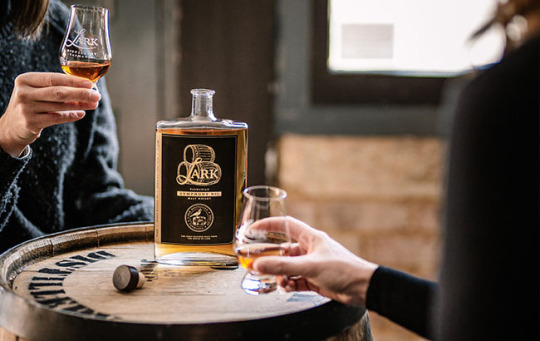
I’ve had the Lark’s Classic Single Malt with its hints of citrus and butterscotch and it’s peated too with a lovely balanced smoky woodiness and vanilla. Also from the Lark’s stable I’ve had tipple of Lark 9 year old Bourbon cask whisky which has a lot more complex notes. Lark of course is at forefront of Tasmania’s whisky growing region with other whiskies such as Sullivan’s Cove and Bakery Hill, also adding to the growing prestige of whiskies made in Tasmania.
I love the story of how Lark began. Apparently, founder Bill Lark was trout fishing with his father-in-law Max in the Tassie highlands that the two scratched their heads and said: “I wonder why there isn’t anyone making malt whisky in Tasmania.” The climate, access to barley, natural peat bogs and pure, soft water were all in abundance, but nobody had connected the dots for over a hundred years due to archaic licensing laws. Since then, Bill Lark worked tirelessly to promote the Southern island as one of the world’s best whisky-producing regions, all the while expanding his eponymous distillery from a small apparatus in his kitchen to a huge copper still which gets put through its paces to keep up with demand. Apparently, the operation is still a family affair and the distillery itself has undergone a recent world-class makeover. Now that’s a story to worth raising your dram to.

Of course Australian whisky is still startlingly a niche thing, even within Australia, with Starward its leading domestic producer accounting for 66% of Australian whiskies 1% share of the market. What I understand from Aussie work colleagues who are whisky aficionados is that 50% of the Australian whisky market has been bourbon. Jack Daniels accounts for over a quarter of the market with 26% and it accounts for 52% of American whiskies sold in Australia. Jim Beam has a respectable 10% and 20% across those sectors, and Makers Mark is third. Rye whisky accounts for just 0.72% of the total sales, with Woodford Reserve (34%), Bulleit (32%) and Michters (11%) the leaders.
Scotland holds 27% of the total market - blends and malts. Johnnie Walker dominates with 15%. Chivas Regal represents 2% of total sales. Glenfiddich 12-Year-Old Single Malt leads the Single Malts (Scotland) category with 1.7% (6% of total Scotch, including blends). Lagavulin, Laphroaig and Talisker all equate to around 1% each. Given that these are relatively small and distant distilleries, it does suggest that the smoky/peaty style from Islay is beloved by malt drinkers in Australia.
Japan comes in with 1.5%, with Hibiki dominating - their 12-Year-Old has 25% of the market and their 17-Year-Old has 30%.
It would seem that the era of Covid, closures, cuts and chaos is proving to be an exciting time for whisky in Australia. The story seems to be Australian whisky is enjoying dynamic growth. The growing demand through volume for Australian whisky is primarily in Asia. Australian producers are now entering partnerships with specialist whisky markets like Japan and Taiwan which has seen an incredible uplift on single cask requirements (cask strength, finishes, aged statements).
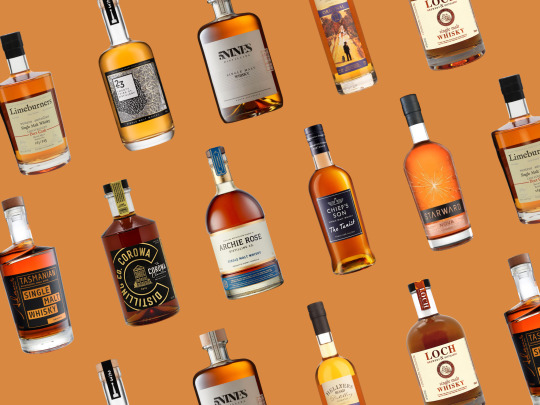
Australian Distillers Association figures reflect this growth. The number of registered Australian distilleries almost doubles from 2021-2022, growing from 200 in January 2021 to 380 in February 2022. There is no question that Australia could be the next break out whisky nation once prices become more competitive to other foreign producers and it has greater market visibility outside of Australia. Just as importantly the whisky market is young. The number of 25-34 year olds drinking whisky has doubled in the past six years and around 19 million glasses of whisky are drink every month.
What it also has going for it is the land’s natural resources ie the earth (or the terroir as the French winemakers call it). Australia is one of the largest malting-grade barley producers in the world, with many varieties unique to the country. Whisky producers increasingly work more closely with a number of New South Wales’ farmers to get hold of unique malts which demonstrate regional terroir. It allows all concerned to develop a relationship with the land and their custodians, exploring ancient and heirloom varieties. Surely, that’s a good thing.
It also allows for these whisky producers to experiment and take creative risks both in the way they can source the variety of grains and also explore ‘paddock to bottle’ with barley. The end result is Australian whisky can frustrate anyone to categorise it into easy tick boxes. That’s a good thing too.

Finally, it would be remiss to talk about Australia’s natural resources without alluding to its vineyards. The country’s winemaking history has granted distillers access to some truly fantastic ex-fortified wine casks, particularly Apera. Australia’s answer to sherry, Apera, is made from a different blend of grapes, but still has many similarities in style. Many of these casks have been around for decades - indeed, whisky producer Archie Rose has filled casks that contained Apera for more than 70 years.
Australia can learn from Japan’s experience of whisky, namely, concentrate on producing great whisky for the world to enjoy and most importantly, take your time.
I know a lot more about Japanese whisky as I grew up partly in that culture as a child when we lived overseas but also been a frequent visitor there for work reasons. I think a good explanation for why Japanese whisky is so good is that Japan’s distilleries typically adhere to Scotch methods, but the country’s distinct seasons have a significant impact on the maturation process - the cold winters slow the ageing of the spirit, while the humid summers speed it up. A variety of casks are used in the ageing process, but the country’s indigenous lumber, most famously mizunara (Japanese oak), ages unique whisky that’s subtle, yet strong. Unlike their Scottish counterparts, Suntory and Nikka, the two giants of Japanese whisky, distil a mind-boggling array of whiskies in-house, giving them great control over their products and enabling them to experiment with different whisky-making techniques.

The history of Japanese whisky is shrouded in mystery, since very little is recorded in whisky making before the famed establishment of Suntory’s Yamazaki Distillery in the early 20th century. What we do know is that a few shochu and sake breweries produced Japanese whisky on the side as early as the 1850s. Whisky took a historical turn in Japan in 1923, when Suntory established the first official whisky distillery. But it was when Suntory’s domestic market for whisky collapsed and it and other rival producers such as Nikka focused on producing the best single malt whiskies it could did Japanese whisky gain global recognition with countless international awards and has been in high demand from whisky lovers everywhere.

Today, the companies of Masataka Taketsuru (Nikki) and Shinjiro Torii (Suntory) still represent their founders’ passion for Japanese whisky. Masataka Taketsuru was known as the “Father of Japanese Whisky” and studied the intricate whisky-making process in Scotland. He took his knowledge and his newly wed Scottish wife, Rita, back to Japan and established one of the most popular Japanese Whisky companies: Nikka Whisky. Shinjiro Torii was the founder of Suntory, known as Kotobukiya back then, and built Yamazaki in 1923. However, Taketsuru and Torii had a history before these two companies were born. Taketsuru actually worked in Torii’s company for over 10 years, so the Suntory and Nikka whisky companies have a background story that is linked to each other. Taketsuru came from a family who had a sake brewery for Japanese alcoholic beverages. He studied chemistry at the University of Glasgow to improve his understanding of creating alcoholic beverages.

Taketsuru and Torii became business partners. But their search to find a whisky that the Japanese people could like and claim as their own came to nought. Torri, the business brains, wanted the distillery to be near as possible to Tokyo and have billboards plastered at key points where trains would go by. Taketsuru, the perfectionist, wanted to move further north to produce whisky as he was convinced the climate and soil up there would be more conducive to great whisky. Eventually they went their separate ways. Taketsuru ventured out on his own in 1934 and established the Yoichi Distillery in Hokkaido in 1940.
Suntory originally offered an alcoholic beverage called Akadama Sweet Wine, which was a huge success for the company and continues to be produced today. However, Shinjiro Torii wanted to create a whisky that suited the Japanese people’s preferences and moved forward with the establishment of Yamazaki Distillery, despite the opposition he received from his business partners. In 1929, Torii created the first whisky from Suntory called Suntory Shirofuda (‘White Label’), but it turned out to be unsuccessful because it didn’t fit the tastes of the Japanese consumer base. The second whisky released from Suntory was the Suntory Kakubin, which became a hit and continues to be Japan’s #1 best-selling whisky.
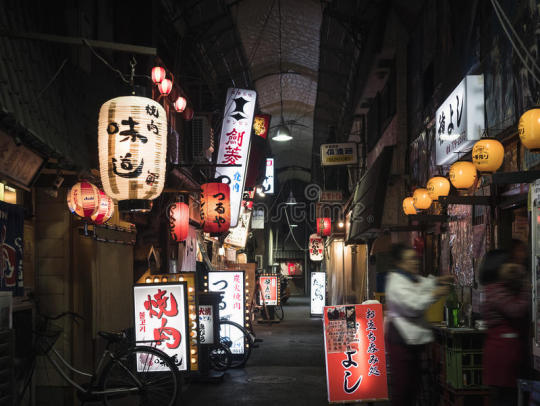
To spread the knowledge and passion for Japanese whisky, Suntory opened whisky bars around the country in 1955. In 1970, Suntory revolutionised how the Japanese food and drinking culture by creating the “Mizuwari,” a water-and-whisky drink that was easy to drink and enjoy with Japanese cuisine.
However domestic whisky market began to collapse for not just Suntory but other domestic whisky producers in the 1990s. The culture was changing. No longer were young salaried men drinking whisky as their bosses did - it was seen as a rite of passage. They instead preferred vodka and other spirits now making inroads into the Japanese drinks market. Increasingly whisky came to be seen as ‘an old man’s drink’. Sales plateaued and Suntory focused on other parts of their drinks and food empire. Suntory, along with Nikka, began to focus on producing high end single malt whiskies that could makes its debut to the outside world. This only bore fruit a decade later in the 2000s when Japanese whisky started to winning prestigious awards for its whiskies.

It’s an open question whether the rise of Japanese whisky was also due to the product placement of tis whisky in the cult movie ‘Lost in Translation’ in 2003 which featured Bill Murray’s character advertising Suntory’s whisky with the memorable quote: “For relaxing times, make it Suntory time!” Some have argued that the movie helped in boosting the exposure of Japanese whisky as international whisky lovers gradually discovered this luxury spirit from Japan. At the very least, the Hollywood exposure it didn’t hurt. In 2003, Suntory’s Yamazaki 12 Year Old won the Gold Award at the International Spirits Challenge in the UK and it was part of a wave of outstanding awards for Japanese whiskies.
Oddly enough, whisky is back in favour with the Japanese. In more recent years, the Japanese whisky business has boomed and become even more popular within Japan and out of the country. The Highball drink, a simple mixture of Japanese whisky and soda, has become a staple to drink with Japanese dishes.
Suntory's Yamazaki 12 Year Old continues to impress with its well-balanced fruity sweetness, something that appeals to novice and experienced whisky drinkers alike. I would say it’s the original Japanese whisky and remains Suntory’s flagship single malt. Yamazaki is multi-layered with the aromas of fruit and Mizunara Oak. Even today, Yamazaki is the leading single malt whisky sold in Japan, and enjoyed in more than 35 countries. It’s an excellent entry point into Japanese whisky.
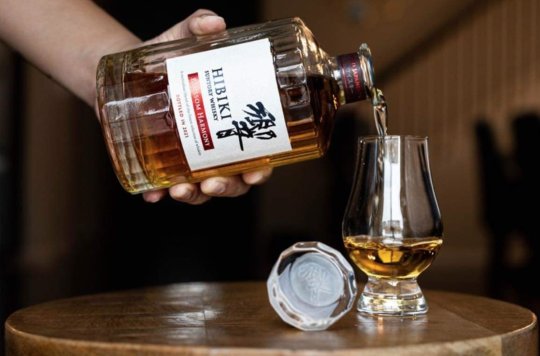
I would also recommend the Hibiki Blossom Harmony. Blending is a key component of the craft of making Japanese whisky. Great care and attention is paid to flavours and proportions, with some distilleries producing dozens of different whiskies that are combined into the final product. Hibiki, a blend from Suntory, launched in 1989, and there are now several different expressions in the range. The 17-year-old version is probably the best, an incredibly well-rounded sipper with lovely notes of orange peel, caramel, and toffee.
As for armagnac and cognac, I would agree with you that generally the former is overlooked when actually it is better (my opinion). It is the only spirit that can really become more refined with age. Before I moved to France and before I decided to invest in a vineyard with my cousins, I was quite happy drinking cognac as an after dinner drink - to go with my cigar that I smoked with the men. I wasn’t really aware of armagnac until I saw it increasingly being served around the French dinner table. I enjoyed the experience and it set me off on a little side journey of exploration.
I hadn’t realised that it was France’s oldest brandy for over 700 years but talk to locals and they derisive of calling armagnac a brandy. It’s closer to wine. The production of Armagnac has been documented since 1310, when Vital Dufour, prior of the town of Eauze, described in his ‘Livre très utile pour garder la santé et rester en bonne forme’ the advantages of a brandy known as aygue ardente. Armagnac appeared thanks to the meeting of two civilisations: that of the Arab world and its still, and that of the Christian world and its monks who planted vines. It does not yet bear the name of today. It was then an apothecary’s remedy. In 1461 it was found on the market of Saint Sever. It became a drink that was appreciated for its gustatory qualities, a drink called “le merveilleux”. Historically, Armagnac is a precious brandy, but confined in the margin of the wine production of the region.

As you well know Armagnac is produced in the South-West region of France, the Gers department, the East of the Landes, and the South of the Lot-et-Garonne; whereas Cognac is produced 300 km further North in Charente, Charente-Maritime, parts of the Dordogne and Deux-Sèvres - where it so happens a lot of British expatriates reside permanently or have a second home.
The terroirs are distinguished by their soils and climate, which give their brandy their typical character. The Cognac soil is mainly limestone, while the Armagnac soil is sandy, clayey-siliceous and clayey-limestone. The Armagnac region has a continental climate, while the Cognac region has a more oceanic climate. Part of the reason why I was drawn to armagnac was variety of grapes used. You know that cognac is made from the Ugni Blanc grape only, whereas Armagnac is made from 10 different grape varieties, including Ugni Blanc. The diversity of grape varieties authorised by the AOC Armagnac decree is due to the viticultural tradition of the region which also produces tasting wines. The Cognac region only produces wine for distillation.
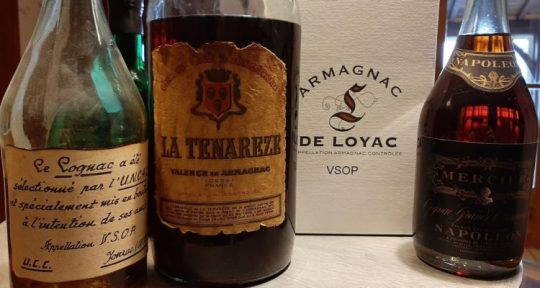
Where the full flavour of armagnac comes out above cognac is how they are made. Armagnac is column-distilled, which is a process where the alcohol is continuously heated between two vertical columns and then aged in French oak barrels or casks for a minimum of 1 year. Though Armagnac and Cognac are both are brandies distilled from wine, Armagnac is distilled once while Cognac is distilled twice. Indeed the still used for the distillation of Cognac is different from the one used for Armagnac. The Cognac or “Charentais” alembic is a basic copper alembic c” (double heating): the alcohol is distilled twice and the brandy comes out with a higher alcohol content (72°). The Armagnac still is a double-column copper still with trays, for a continuous distillation: the wine is distilled only once and the brandy comes out with a low alcohol content (54°).
The plates of the Armagnac still allow the alcohol vapours to bathe in the fresh wine and extract its aromas: this is the bubbling. This step does not exist in the Cognac still where the alcohol vapours do not meet the fresh wine. Its ageing links it to the culture of wine and distinguishes it from other brandies. Like wine, Armagnac can be vintage to reflect the history of the year. Cognac is gradually diluted with distilled water to reach its 40-45° for sale. The brandy, “burned” by the alcohol, cannot evolve.
To my mind, armagnac and cognac have two singular historical trajectories, which influence their current reputation. Armagnac has developed on a French consumption model. Its more confidential artisanal production perpetuates ancestral know-how. Cognac was conceived for an export market to the Netherlands and England. It mirrors the story of the battle between Bordeaux wines and Burgundy (or Bourgogne) wines. Bordeaux wines were made from a blend of grapes and produced for an export market to the English primarily whilst Bourgogne has been a single grape and very much towards a home grown market.

If I have any visitors to France I always introduce them to armagnac if I can. Armagnacs exalt the richness of that South West region’s gastronomy: foie gras, chicken in a pot, duck breast. They go particularly well with dark chocolate cake, almonds and dried fruits, walnut pie or orange macaroons.
It’s great as an after dinner liqueur. The sweet flavours of Armagnac make it a perfect after-dinner drink. I would also choose an older armagnac as a rule older is always better so go with a vintage armagnac. But not always as when drinking clear Armagnacs - known as Armagnac blancs or Haut-Armagnacs - which have spent less time in the oak ageing barrels - one can enjoy them on the rocks or chilled in the fridge. I particularly love to end a meal at a restaurant having an Armagnac Brûlot - in other words, flambé, using sugar to set it on fire. It’s a great way to end a pleasant dining experience.
But armagnacs are also perfect for cocktails as a pre-dinner aperitif or lounging around a swanky hotel bar. I would highly recommend the Armagnac Stinger, a cocktail, originally served with Cognac, was a pre-Prohibition American favourite. It combines Armagnac, crème de menthe, orange bitters, and garnish with a sprig of mint. There is also the D’Artagnan, which combines armagnac, orange liqueur, orange juice, simple syrup, and finished off with a splash of champagne - perfect for partying. The Continental Sour is another cool one which mixes together armagnac, egg whites, simple syrup, lemon juice, and red wine.
Whatever one drinks, be it armagnac or cognac, I believe in its conviviality for cultured conversation and good natured laughter (at your own expense) over a shared meal with like minded people, be they family and friends. The French love arguing over a fine meal. The arguments can be heated and robust but they are never personal and drink is the balm to bring people together again. If you bear that in mind then you can’t go wrong.

Thanks for your question.
#question#ask#drink#drinking#alcohol#scotch whisky#whisky#japanese#australian#aqua vita#armagnac#cognac#french#france#farming#wine#culture#personal
41 notes
·
View notes
Photo







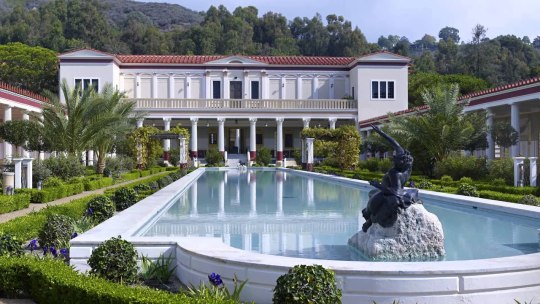
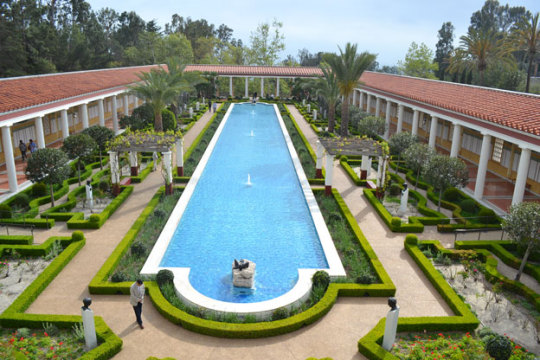
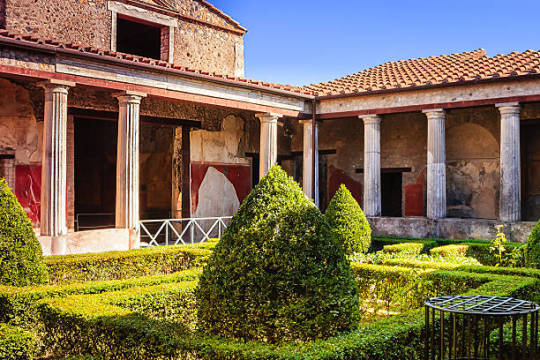
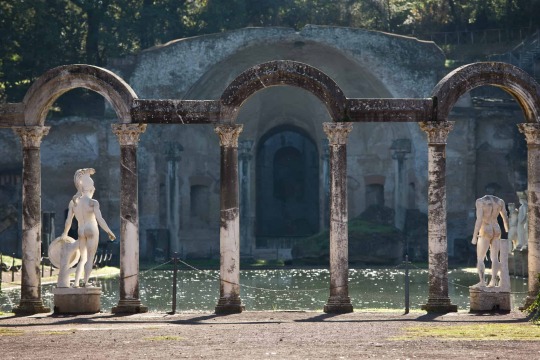
Vast Subterranean Aqueduct in Naples Once 'Served Elite Roman Villas'
Once played in by local children, a vast tunnel that goes through a hill in Naples, Italy, is actually a Roman aqueduct.
Forty years ago, when children in Naples were playing in caves and tunnels under the hill of Posillipo in Italy, they didn't know their playground was actually a Roman aqueduct. When they shared their memories with archaeological authorities recently, it kicked off an exploration of one of the longest, most mysterious examples of ancient water infrastructure in the Roman world.
Rome's famous aqueducts supplied water for baths, drinking, public fountains and more. Built during a period of about half a millennium (roughly 300 B.C. to A.D. 200), aqueducts around the former Roman Empire are highly recognizable today thanks to their multitiered arched structure. But this marvel of ancient architecture represents only a small fraction of the actual water system; the vast majority of the infrastructure is still underground.
Outside of Rome, subterranean aqueducts and their paths are much less understood. This knowledge gap included the newly investigated Aqua Augusta (opens in new tab), also called the Serino aqueduct, which was built between 30 B.C. and 20 B.C. to connect luxury villas and suburban outposts in the Bay of Naples. Circling Naples and running down to the ancient vacation destination of Pompeii, the Aqua Augusta is known to have covered at least 87 miles (140 kilometers), bringing water to people all along the coast as well as inland.
But the complex Aqua Augusta has barely been explored by researchers, making it the least-documented aqueduct in the Roman world. New discoveries earlier this month by the Cocceius Association (opens in new tab), a nonprofit group that engages in speleo-archaeological work, are bringing this fascinating aqueduct to light.
Thanks to reports from locals who used to explore the tunnels as kids, association members found a branch of the aqueduct that carried drinking water to the hill of Posillipo and to the crescent-shaped island of Nisida (opens in new tab). So far, around 2,100 feet (650 meters) of the excellently preserved aqueduct has been found, making it the longest known segment of the Aqua Augusta.
Graziano Ferrari (opens in new tab), president of the Cocceius Association, said in an email that "the Augusta channel runs quite near to the surface, so the inner air is good, and strong breezes often run in the passages." Exploring the aqueduct requires considerable caving experience, though. Speleologists' most difficult challenge in exploring the tunnel was to circumvent the tangle of thorns at one entrance.
"Luckily, the caving suits are quite thornproof," he said. "After succeeding in entering the channel, we met normal caving challenges — some sections where you have to crawl on all fours or squeeze through."
In a new report (opens in new tab), Ferrari and Cocceius Association Vice President Raffaella Lamagna (opens in new tab) list several scientific studies that can be done now that this stretch of aqueduct has been found. Specifically, they will be able to calculate the ancient water flow with high precision, to learn more about the eruptive sequences that formed the hill of Posillipo, and to study the mineral deposits on the walls of the aqueduct.
Rabun Taylor (opens in new tab), a professor of classics at the University of Texas at Austin who was not involved in the report, said in an email that the newly discovered aqueduct section is interesting because it is "actually a byway that served elite Roman villas, not a city. Multiple demands on this single water source stretched it very thin, requiring careful maintenance and strict rationing."
Taylor, an expert on Roman aqueducts, also said the new find "may be able to tell us a lot about the local climate over hundreds of years when the water was flowing." This insight is possible thanks to a thick deposit of lime, a calcium-rich mineral that "accumulates annually like tree rings and can be analyzed isotopically as a proxy for temperature and rainfall," he explained.
Ferrari, Lamagna and other members of the Cocceius Association plan to analyze the construction of the aqueduct as well, to determine the methods used and the presence of water control structures. "We believe that there are ample prospects for defining a research and exploration plan for this important discovery, which adds a significant element to the knowledge of the ancient population" living in the Bay of Naples, they wrote in the report.
By Kristina Killgrove.
#Vast Subterranean Aqueduct in Naples Once 'Served Elite Roman Villas'#posillipo italy#roman aqueduct#aqua augusta#serino aqueduct#bay of naples#pompeii#archeology#archeolgst#ancient artifacts#history#history news#ancient history#ancient culture#ancient civilizations#ancient rome#roman empire#roman history
41 notes
·
View notes
Text
Its wild that the character who I turned into a bicycle (as in, i ship them with everyone) is also, coincidently, one of the most hated in the fandom
#Fandom culture#Fandom#ok i will now start to list characters that fit the definition#ochako urakara#ochaco uraraka#wendy testaburger#Amy Rose#Well not really anymore#But it was bad a couple of years ago#scratch that last 2#Makima#mikasa ackerman#asuka langley soryu#Brief panty and stocking#Mabel Pines#aqua konosuba#teruhashi kokomi
11 notes
·
View notes
Text
barbie girl by aqua is one of the most backfired attempts at satire in history
#it actually kind of makes my stomach churn when i think about how the inherent meaning is essentially that barbie is a dumb blonde#it's a very shallow 90s interpretation of the character's meaning#not to say barbie can't be criticized but. like. good criticism pls not just that she's a girly girl who likes to have fun#but it is funny how many people genuinely think the song is a celebration of barbie bc of how fun the song is#its like 'im a barbie girl in a barbie world' 'bitch!!!!! me too!!!!!!!!!!'#this is why they had to announce that the song would not be in the movie and social media lost their minds#does everyone remember that? i do. that was before we knew anything about the plot or even had a trailer#i wonder if barbie world w nicki and ice spice was written after that as a sort of appeasement. but idk#i cant pretend to know when and how the soundtrack was conceived#but the sample of the aqua song on nicki and ice spice's song which is about unironically loving barbie...#everything comes full circle you know?#text post#sorry aqua#to be clear i still enjoy the original barbie girl but i think it's kinda only fun in the way culture has interpreted#it over the years. obviously it's one of the most iconic songs of its time and era#all of those unce unce eurodance meme songs from the late 90s/early 2000s were some of the first music i ever loved
6 notes
·
View notes
Text

Misterica - Land of Mist || Always Accepting
Anonymous asked:
📚☀️☁️ +
What made you fond of those twins you keep so close, anyway? They seem like the type of people you'd scold for a lack of discipline and try to avoid... and their Mist is nowhere even close in color to yours. How do their antics not get on your last nerve? Shouldn't they be working instead of slacking off? They're supposed to teach the prince, but are they even doing that? Why would you ever tolerate their behavior?


·:¨༺ ✩★✩ ༻¨:·. "For starters, you're getting on my last nerve faster than either of those two do. Also their names are Sielu and Sydän, not 'those twins'. Being twins doesn't sum up their entire reason for being. They're twins but they're entirely different people with different personalities, so I suggest you respect this.
As for slacking off, they hardly do either. Both of them are some of the hardest working Mistericans in their fields I have ever met. Do you think they became experts at their crafts over night? Obviously you know nothing of the arts.
So for your information if you must know, I tolerate their behaviors because they are both literal geniuses in the arts they profess in. They are teaching the prince and masterfully I might add. Prince Pilvi is becoming single-handedly the most talented musician and dancer, Misterica has ever seen and they're to thank for it.
There's more to life than your human based academics. The sheer arrogance ... I swear."
#meme || misterica land of mist#guest muse: opettaja aamunkoitto#topic: misterican royal tutors#topic: a prince's life#topic: nousi aamunkoitto#topic: violetti sydän#topic: aqua sielu#topic: misterica#topic: misterican culture
1 note
·
View note
Text
Enhancing Aquaculture: Probiotics for Improved Gut Health and Feed Digestion
Aquaculture, the farming of fish and other aquatic organisms, has become an essential component of the global food system. With the increasing demand for seafood, the industry faces numerous challenges, including disease management, feed efficiency, and environmental sustainability. One promising solution to these challenges is the use of probiotics to improve gut health and feed digestion in aquatic species.
Probiotics are live microorganisms that, when administered in adequate amounts, confer health benefits to the host. In aquaculture, probiotics are added to feed or water to promote a healthy gut microbiota, enhance nutrient absorption, and improve overall health and growth performance of the cultured species. The use of probiotics in aquaculture has gained significant attention due to their potential to reduce the reliance on antibiotics, which can lead to antibiotic resistance and environmental contamination.
Improved gut health is one of the primary benefits of using probiotics in aquaculture. The gut microbiota plays a crucial role in the digestion and absorption of nutrients, immune response, and overall health of the host. By introducing beneficial bacteria into the gut, probiotics can help maintain a balanced microbial community, outcompeting harmful pathogens and reducing the risk of infections. This, in turn, leads to better feed conversion ratios, as the fish or shrimp can utilize the nutrients more efficiently.
Feed digestion is another critical area where probiotics can make a significant impact. Probiotics produce enzymes that help break down complex feed ingredients into simpler forms, making it easier for the host to digest and absorb the nutrients. For example, certain strains of Bacillus and Lactobacillus can produce enzymes such as amylase, protease, and cellulase, which aid in the digestion of carbohydrates, proteins, and fibers, respectively. This enzymatic activity not only enhances nutrient availability but also reduces waste production, contributing to a cleaner and more sustainable aquaculture environment.
Moreover, probiotics have been shown to improve the immune response of aquatic species. A healthy gut microbiota can stimulate the production of antimicrobial peptides and other immune-related molecules, enhancing the host's ability to fight off infections. This immunomodulatory effect is particularly important in aquaculture, where disease outbreaks can have devastating economic and ecological consequences.
The benefits of probiotics in aquaculture extend beyond individual health improvements. By promoting better feed efficiency and reducing disease incidence, probiotics can contribute to the overall sustainability of the industry. Improved feed conversion ratios mean that less feed is required to produce the same amount of biomass, reducing the pressure on wild fish stocks and other feed resources. Additionally, healthier and more resilient fish or shrimp populations can withstand environmental stressors better, leading to more stable and productive aquaculture systems.
For more information visit us:
0 notes
Text
Exploring the Importance of Good Gut Health in Aquaculture

In the world of aquaculture, where the well-being and growth of fish are paramount, an often-overlooked factor plays a crucial role: gut health. Just as in humans, the digestive system of fish is a complex and intricate network that significantly impacts their overall health and performance. In this blog, we will delve into the importance of maintaining good gut health in aquaculture and how it contributes to the success of fish farming operations, with a special focus on the innovative solutions provided by Skretting.
The gut serves as a foundation for fish health, as it is responsible for efficient digestion, nutrient absorption, and the prevention of various diseases. A healthy gut ensures that the fish can effectively utilize the nutrients from their feed, leading to optimal growth, improved immunity, and enhanced overall vitality.
A well-functioning gut is essential for optimal digestive efficiency. It allows fish to break down and absorb nutrients from their feed more effectively, ensuring that they receive the essential proteins, lipids, carbohydrates, vitamins, and minerals necessary for growth and development. Proper digestion also helps reduce feed wastage and the release of undigested nutrients into the environment, minimizing the ecological footprint of aquaculture.
A robust gut health promotes a strong immune response in fish. The gut houses a significant portion of the fish's immune system, containing specialized cells that defend against harmful pathogens and diseases. A healthy gut microbiota, the diverse community of beneficial bacteria living in the fish's digestive tract, plays a crucial role in modulating the immune system, preventing the colonization of harmful bacteria, and supporting the fish's overall disease resistance.
In aquaculture, feed conversion ratio (FCR) is a key indicator of efficiency and profitability. Good gut health directly influences FCR by enhancing nutrient utilization and reducing the energy expenditure required for digestion. Fish with a healthy gut can convert feed into flesh more efficiently, resulting in reduced feed costs and improved economic viability of aquaculture operations.
Maintaining a balanced gut microbiota is vital for fish health. Factors such as stress, improper nutrition, and suboptimal water quality can disrupt the delicate balance of beneficial bacteria in the gut, leading to dysbiosis or an imbalance in the gut microbial community. Dysbiosis can negatively impact digestion, nutrient absorption, and disease resistance, ultimately affecting the growth and overall well-being of the fish.
Skretting, a leading provider of aquaculture feed, recognizes the significance of gut health in fish farming. They offer a range of specialized feed solutions that are designed to support optimal gut function and overall fish health. Skretting's feeds are formulated with carefully selected ingredients and additives, including probiotics and prebiotics, to promote a healthy gut microbiota and ensure efficient digestion and nutrient absorption.
Skretting's commitment to sustainability and innovation is evident in their feed solutions. They continuously research and develop new feed formulations that not only improve fish performance but also minimize environmental impact. By optimizing the nutritional composition and incorporating alternative protein sources, such as plant-based proteins and insect meal, Skretting contributes to a more sustainable and responsible aquaculture industry.
In aquaculture, good gut health is essential for the success and sustainability of fish farming operations. By prioritizing efficient digestion, supporting immune function, optimizing feed conversion, and maintaining a balanced gut microbiota, aquaculturists can enhance the overall well-being and growth of their fish. Skretting's innovative feed solutions play a crucial role in promoting good gut health and providing aquaculturists with the tools they need to thrive in a sustainable manner. With a focus on excellence and environmental stewardship, Skretting is at the forefront of advancing aquaculture feed for a healthier and more prosperous industry.
Explore more about us: https://www.skretting.com/en-in/
Contact us at https://www.skretting.com/en-in/this-is-skretting/contact/
#aquaculture india#aqua feed#aqua nutrition#fish farming#aquaculture#shrimp feed#whiteleg shrimp#shrimp culture
1 note
·
View note